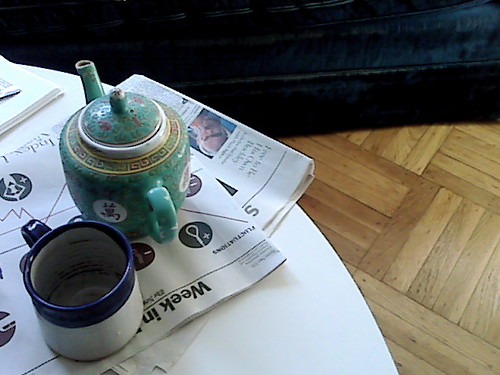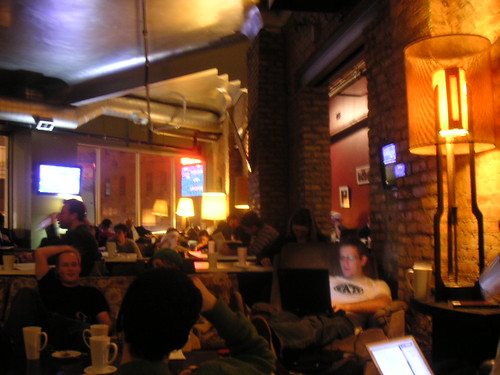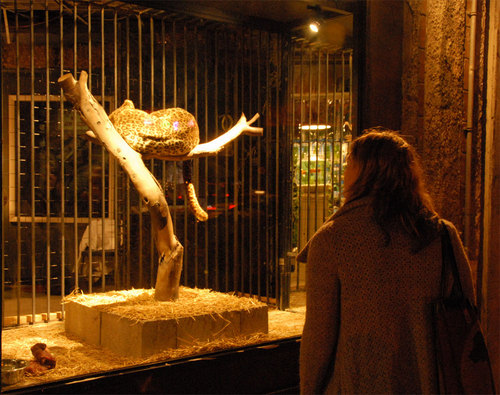I came across an article in WIRED this morning called Kill Your Blog, by Paul Boutin of Valleywag. The first paragraph reads, "Thinking about launching your own blog? Here's some friendly advice: Don't. And if you've already got one, pull the plug."
A tiny summary:
1. The blogosphere is too crowded and impersonal now
2. Bigger blogs like
Gawker or
Engadget get all of the traffic and show up higher on searches anyway
3. All that is left of enthusiasm in the smaller bloggers' posts is in the form of abusive anonymous commenters
4. Other 2.0-ish things like Flickr, Twitter and Facebook are more efficient (Google won't find your blog as quickly as one can search on Twitter), easy (fewer steps and clicks on Facebook) and exciting.
Please pardon me, but... what the F? I think Paul is missing the entire point for why so many of us smaller bloggers do this in the first place.
...your blog will still draw the Net's lowest form of life: The insult commenter. Pour your heart out in a post, and some anonymous troll named r0rschach or foohack is sure to scribble beneath it, "Lame. Why don't you just suck McCain's ass." That's why [Jason Calacanis of Weblogs] has retreated to a private mailing list. He can talk to his fans directly, without having to suffer idiotic retorts from anonymous Jason-haters.
Yes, anonymous commenters are annoying and at times demoralizing. But, this is nothing new (and certainly not
unique to blogs). Flaming has been happening since the dawn of P2P on the web. And the fulfillment that all the bloggers I know get out of reading interesting points of view from readers –
and even making great friends for life – proves to be well worth a snarky comment here and there.
The e-mail list idea is kind of a neat one, but it's completely different from blogging! With e-mail, there is a specific and controlled number of people receiving your information; you completely eliminate the likelihood that someone will stumble upon it by chance. I guess Paul doesn't see value in the click-then-click. How can one get inspired randomly and unexpectedly if they can't find you through clicks of clicks and possibly have their day made just a little better or more inspired? The environment that a lot of smaller bloggers live in is about reading something one didn't necessarily expect to be reading that day – serendipitous delights from grazing and
gathering bits and bobs from different places. And when you comment, anybody else reading can respond and build on or expand your thoughts. Not at all like being on an e-mail list that one
knows they're subscribed to.
When blogging was young, enthusiasts rode high, with posts quickly skyrocketing to the top of Google's search results for any given topic, fueled by generous links from fellow bloggers. ... That phenomenon was part of what made blogging so exciting. No more. Today, a search for, say, Barack Obama's latest speech will deliver a Wikipedia page, a Fox News article, and a few entries from professionally run sites like Politico.com. The odds of your clever entry appearing high on the list? Basically zero.
This is insinuating that:
1. All people reading blogs are doing so to look for something specific. OR People only go to blogs when they have searched for something specific and a few big ones are the top results.
2. All bloggers are blogging so they can get hits or fame.
Ever think that we oftentimes read and write "just because?"
And as for
Twitter being the new and exciting thing of 2008 (???), I do agree that there are – and can be – sometimes "chirpier ways to get your word out." But chirpiness isn't the point of a blog to begin with. It's
meant for longer form, cultivation and evolution of thoughts. Not pithiness. There is a place for every type of expression today. Blogs aren't good for chirpiness, and Twitter isn't good for having an in-depth discussion about something you're interested in. A lot of these "social multimedia sites" work so well
in tandem with your blog, as support nodes to create a fuller experience and gestalt of your life.
I don't know. This piece sounded like the purpose of all bloggers is to act as a widely-read, ad-generating platform rather than a digital conversation. Maybe for a lot of them, it is. But until I personally see diminishing returns on my tiny little space (that only gets about 100 readers per day), I'm not going anywhere.
EDIT | Upon Noah's comment, I read a couple more posts about the article. Makes me wonder if the whole thing wasn't just one big experiment, since upon thinking about it again it seems far too ridiculous to be serious. And regarding the
flame bait, well I just walked right into that one, didn't I? At least it helped me pin down exactly why I do this...


















